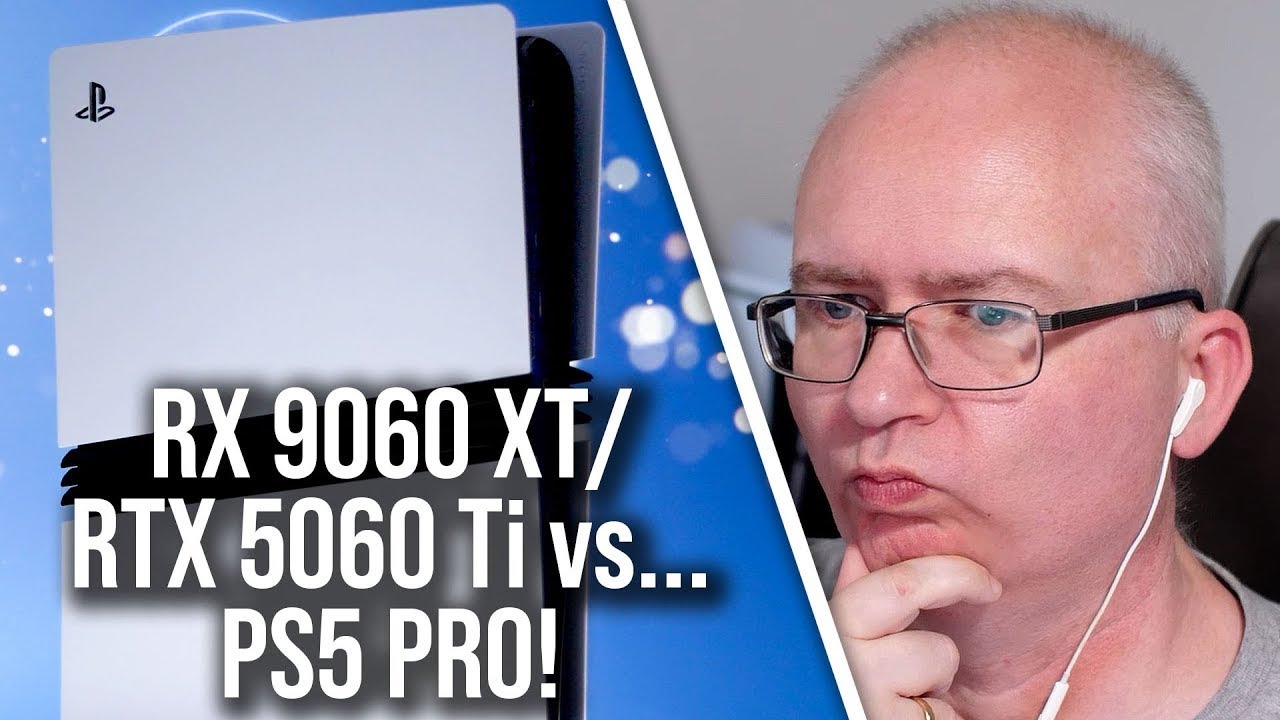The video compares the PlayStation 5 Pro with the AMD RX 9060 XT and Nvidia RTX 5060 Ti, finding that both GPUs generally match or exceed the Pro’s performance at a similar price point, with the 9060 XT offering particularly good value. While Nvidia excels in ray tracing and upscaling technologies, the higher price of the RTX 5060 Ti makes the 9060 XT a more compelling budget-friendly alternative for gamers seeking PC performance comparable to the PS5 Pro.
The video compares the performance of the PlayStation 5 Pro with two modern PC GPUs: the AMD RX 9060 XT and the Nvidia RTX 5060 Ti, focusing on finding a PC build with similar specs and price point to the Pro’s $700 cost. Initially, the PS5 Pro was thought to be comparable to a downclocked RTX 4070, but with the arrival of RDNA4 architecture and new GPUs like the 9060 XT and 5060 Ti, the landscape has shifted. Both GPUs demonstrate performance levels that meet or exceed the Pro’s capabilities, sometimes with additional overhead, especially in titles like Blacksmith Wukong where the Pro runs at native 1080p without frame generation, allowing a fair comparison.
In games like Forza Horizon 5, the PS5 Pro is capped at 60 fps, limiting its ability to showcase its full power, but both the 9060 XT and 5060 Ti surpass this cap, averaging over 70 fps with the Nvidia card holding a slight edge. The 9060 XT impressively manages native 4K performance on a budget card, highlighting how modern mainstream GPUs can handle high-resolution gaming that consoles are designed for. Similarly, in Alan Wake 2’s performance mode, both GPUs outperform the PS5 Pro, with the 9060 XT being 13% faster and the 5060 Ti 10% ahead, showing that these cards are close to matching the $700 console’s rasterization performance.
When it comes to ray tracing, the PS5 Pro’s settings are effectively lower than the PC’s low preset, and both GPUs struggle to maintain 30 fps in Alan Wake 2’s quality mode at 4K with ray tracing enabled. This reveals the limitations of the Pro in ray tracing scenarios, and while the 9060 XT and 5060 Ti offer comparable performance, neither fully overcomes the challenge at these settings. Despite these limitations, the video concludes that both GPUs are generally in the same ballpark as the PS5 Pro in terms of overall GPU performance, with the 9060 XT offering good value even on older PCIe Gen 3 platforms.
The video also discusses the market positioning of the 9060 XT, which slots into a space dominated by Nvidia’s mainstream cards. The 9060 XT offers performance close to the 5060 Ti 16 GB model while being cheaper than the 8 GB variant, assuming MSRP holds true. Nvidia excels in upscaling technologies like DLSS and frame generation, which provide tangible benefits especially on high refresh rate monitors, although AMD’s FSR4 still requires more adoption and easier implementation. The RTX 5060 Ti’s ray tracing and upscaling features create unique gaming experiences, such as path-traced Cyberpunk 2077 running smoothly on a mid-range card, though this comes at a higher price.
Ultimately, the video highlights the value dilemma facing the RTX 5060 Ti, which is priced higher than its performance justifies. The 9060 XT emerges as a better value proposition, especially given Nvidia’s pricing strategy. The presenter argues that the 16 GB RTX 5060 Ti should cost no more than $400, and that the upcoming RTX 5070 offers better value for mainstream gamers. The overall message is that budget gaming should see improved price-to-performance ratios as one moves down the product stack, not worse, making the 9060 XT a compelling alternative to the PS5 Pro and Nvidia’s offerings in this segment.
